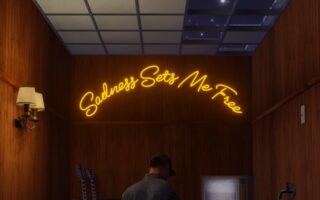Crocodiles 7.5/10; Heaven Up Here 8/10; Porcupine 8/10; Ocean Rain 7.5/10

Not everyone in the present day will find it hard to believe – doubtless to the chagrin of their legendary, quoteaholic singer Ian ‘Mac’ McCulloch – but over forty years ago Echo & The Bunnymen were viewed as the natural torch bearers for Joy Division’s musical legacy, adored by critics and hordes of raincoated miserabilist devotees.
Formed in Liverpool with the addition of Will Sergeant and Les Pattinson in 1978 after McCulloch had been removed from a semi-fictional outfit consisting of him, Julian Cope and Pete Wylie called The Crucial Three, the trio came to the attention of Bill Drummond (later of The KLF) who took on the role of manager.
On the proviso they ditched their drum machine – replacing it with the erstwhile Pete De Freitas – and off the back of a couple of promising singles, they were snapped up by a major label the following year.
Heavily influenced by Bowie, Television and The Doors, the quartet refracted both the uncertainty of a new decade and also a rejection of the past on their debut Crocodiles which – especially on Pictures On The Wall, Rescue, Monkeys and the title-track – flirted with punk’s energy whilst melding it with 60’s psychedelia and R&B.
As with the former members of Joy Division, the quartet soon found however that labels became too constrictive; by the time Heaven Up Here arrived in 1981 blinkers were off and horizons were being readjusted.
Now they were both introverted, almost tortured, but also, as McCulloch described, ‘spiky,’ garnishing basic instrumentation with synthesizers and angst, the singer’s voice an instrument on its own.
On A Promise, with its endlessly trippy guitar signature, announced more bold excursions, although with repeated listens it was a record on which conventional pop lurked not far below the surface.
It’s worth remembering that this was a period during which there were four weekly broadsheet music papers with a combined circulation of over half a million; as they grew in reputation, for groups like the Bunnymen every move was dissected and over-analysed, particularly given the singer’s often critical assessment of those seen as their rivals, an ire especially directed at Irish upstarts U2.
This meant that opening 1983’s Porcupine with a song as overtly chart-orientated as The Cutter was perceived by many in the fifth estate as selling out to the same dark forces that had seduced the likes of Bono and Jim Kerr.
In reality with that, The Back Of Love and non-album single Never Stop, this was a band creating music which demonstrated ambition and progression, qualities which riled those wed to the underground; it earned them a #2 chart position – a feat only The Smiths also seemed capable of amongst the alternative movement – but hell equally had no vengeance like a critic scorned.
Perhaps they didn’t help themselves by decamping to Paris and hiring a thirty-five-piece orchestra for its successor Ocean Rain – ostentation not surprisingly viewed with distrust – but in The Killing Moon’s dark romanticism it was preceded by arguably their most expansive work, a song almost daring people to dislike it.
Things weren’t quite as they seemed however, whilst hyperbolic shots were also fired in their internecine war with everyone via the candy frosted Seven Seas and the unashamedly jangling Silver, the album’s centerpiece was the outlandish freak out Thorn Of Crowns, McCulloch’s stream of consciousness lyrics veering squarely into pretentiousness.
It was a self-indulgence not everyone was prepared to endorse, and perhaps the step too far they’d long threatened, but in only four years the Bunnymen had leapt upwards constantly, determined to make cerebral music for outsiders whilst latterly trying to bend the very essence of pop to their will.
Re-released on posh vinyl, all four albums give you a chance to now decide for yourselves just how close they came to pulling it off.




